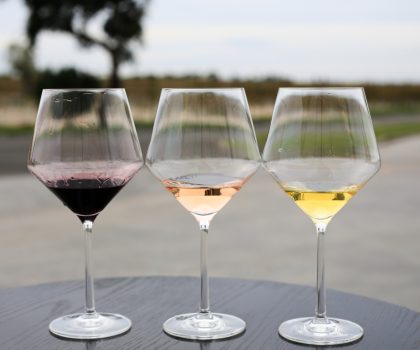Take note of the terroir

By Mary Malik
Have you heard of the term “terroir” when it comes to wine? Jim Sperk of the Northern Ohio Wine Guild says some wine experts use it, especially when talking about French wines.
“Terroir, pronounced ‘tehr-waar,’ is a French word derived from the Latin word ‘terra’ meaning ‘earth’ or ‘land,’” says Jim. “While soil type forms the basis for the term, there are many other factors related to terroir. The climate, humidity, rainfall, drainage, sunlight, topography and planting habits all contribute to defining the final flavor and aroma of a wine.”
The idea behind terroir dates to the ancient Greeks, who were prolific winemakers. Ancient Greece, with its many climatic variations, often exhibited very different results even when growing the same grape variety. This led to the Greeks stamping their wine jars to identify where the grapes came from. Adopted by the Romans and then by the monks in Burgundy where monasteries took control of the vineyards, stamping the wine jars eventually became common practice worldwide.
An interesting study conducted in Italy just a few years ago compared 96 pairs of Cabernet and Merlot wines from two wineries, 15 miles apart.
“Thirty-two panelists were tasked with identifying the difference between the wines based strictly on their aromas in a blind test,” says Jim. “The panelists were able to discern different terroirs more often than the difference between the varietals.”
Based on this study, Jim proposes an interesting and fun taste test with your next glass of wine or a wine tasting with friends.
“Do some research on the wines’ terroirs, then reflect on the taste and aroma of the wine and how it represents the region of origin,” says Jim. “Once you start to notice the terroir of your wine, you’ll notice it again and again.”
For information on the Northern Ohio Wine Guild, contact Jim Sperk at tinymoonwines@usa.net.
